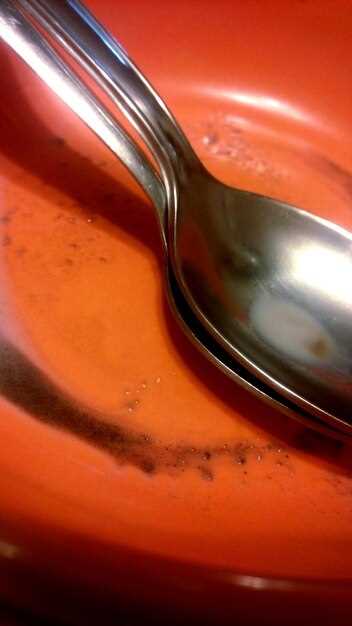
Maintaining the suspension system of your motorcycle is crucial for ensuring a smooth and safe ride. One of the key components of this system is fork oil, which plays a significant role in the performance of your motorcycle’s forks. Fork oil helps to dampen the compression and rebound of the suspension, providing the necessary support and stability while navigating various terrains.
Over time, fork oil can degrade due to factors such as temperature fluctuations, contamination, and consistent wear and tear. This degradation can lead to diminished suspension performance, affecting both handling and safety. Regular maintenance, including the timely replacement of fork oil, is essential to keep your motorcycle in optimal condition and enhance your riding experience.
In this article, we will delve into the importance of fork oil, the signs that indicate it needs replacement, and the recommended intervals for changing it. By understanding these elements, you can ensure that your suspension system remains effective, allowing you to enjoy safer and more comfortable rides.
Identifying the Right Type of Fork Oil for Your Motorcycle
Selecting the correct fork oil is crucial for optimal motorcycle performance. The viscosity of the oil plays a key role in how effectively your suspension absorbs shocks and maintains stability during rides. Different manufacturers offer various oil types, and understanding these options is essential for proper maintenance.
First, consult your motorcycle’s owner manual to find specific recommendations for oil viscosity. Common viscosities include 5W, 10W, and 15W, which indicate how thick the oil is at different temperatures. A lower number, like 5W, suggests a lighter oil suitable for more responsive handling, while a higher number, such as 15W, provides firmer damping for heavier bikes or aggressive riding styles.
Aside from viscosity, fork oil is often categorized as either mineral or synthetic. Mineral oils are derived from crude oil and may require more frequent changes, while synthetic oils offer better thermal stability and longer service intervals, making them ideal for high-performance applications. Evaluate your riding style and conditions to determine the best oil type for your needs.
Additionally, consider the additives present in fork oil, as they can enhance performance, reduce friction, and prolong the life of suspension components. Manufacturers often blend specific additives tailored to their designs, so using the recommended oil ensures compatibility and efficiency.
Lastly, ensure the chosen fork oil meets the manufacturer’s specifications. Using the correct type not only improves ride quality but also minimizes wear on internal components, ultimately saving you on maintenance costs in the long run. Proper oil selection is integral to ensuring your motorcycle’s suspension system functions optimally.
Signs That Indicate It’s Time to Replace Fork Oil

Regular maintenance of your motorcycle’s fork is crucial for optimal performance and safety. Over time, fork oil can degrade, leading to a variety of issues that can affect ride quality. Here are key signs indicating it’s time for a replacement.
Firstly, noticeable leaks around the fork seals are a primary sign. If you observe oil seeping out, it indicates that the fork oil is either contaminated or the seals are worn, necessitating immediate attention.
Secondly, inconsistent damping characteristics can signal a need for replacement. If you experience excessive bouncing or a harsh ride when hitting bumps, the fork oil may have lost its viscosity and effectiveness.
Another indicator is a change in handling feel. If your motorcycle’s front end feels vague, unresponsive, or overly soft during turns, it may suggest that the fork oil is no longer providing adequate performance.
Excessive stiction, or sticking of the fork tubes, can also point to old or contaminated oil. This can create a sluggish response when initiating turns or absorbing shocks, impacting overall riding comfort.
Lastly, regular riding conditions and frequency of maintenance should also be taken into account. If you frequently ride in harsh conditions or have not replaced the fork oil in over a year, it may be time for a change, regardless of any visible symptoms.
Step-by-Step Guide to Fork Oil Replacement

Replacing fork oil is essential for maintaining optimal performance and ensuring a smooth ride. Follow this step-by-step guide to effectively change the oil in your motorcycle’s forks.
Step 1: Gather Your Tools and Materials
Before starting, collect all necessary tools and materials. You will need a socket wrench, a suitable fork oil, a measuring cup, a funnel, drain pan, and a clean cloth. Make sure to wear gloves to keep your hands clean.
Step 2: Prepare the Motorcycle
Position your motorcycle on a stable stand to ensure it remains upright during the procedure. This will help in draining the old oil more effectively. Remove the front wheel if necessary for better access to the fork assemblies.
Step 3: Remove the Forks
Loosen and remove the top cap of each fork tube using the socket wrench. Carefully slide the forks out of the triple clamps, ensuring you hold onto them securely to prevent any drops.
Step 4: Drain the Old Oil
Place the fork upside down in a drain pan to allow the old oil to completely drain out. Tap the fork lightly to help release any trapped oil. Allow sufficient time for all the oil to exit.
Step 5: Clean the Fork Internals
Inspect the internal components of the fork for dirt or damage. Wipe the inside of the fork tubes with a clean cloth to remove any residue. Pay special attention to the bushings and seals; replace them if they are worn.
Step 6: Add New Fork Oil
Using a funnel, pour the new fork oil into the fork. Consult your motorcycle’s manual for the recommended oil type and quantity. It’s essential to use oil that matches the specifications for your bike.
Step 7: Reassemble the Forks
After filling with oil, compress the fork a few times to lubricate the internals. Reinstall the top cap securely. Make sure the forks are tightened to the manufacturer’s specifications to prevent any leaks.
Step 8: Reattach the Forks to the Motorcycle
Carefully slide the forks back into the triple clamps and tighten the clamps to secure them. Reattach the front wheel if you had removed it during the process.
Step 9: Final Checks
Once everything is back in place, check for any potential leaks around the seals. You can also bounce the front end of the motorcycle to test the new fork oil’s performance and ensure that it functions smoothly.
Following these steps will help ensure that your fork oil replacement is done correctly, improving your motorcycle’s handling and ride comfort.
